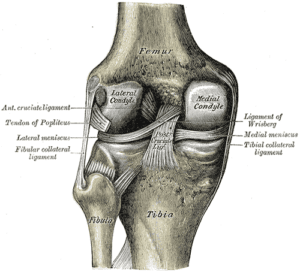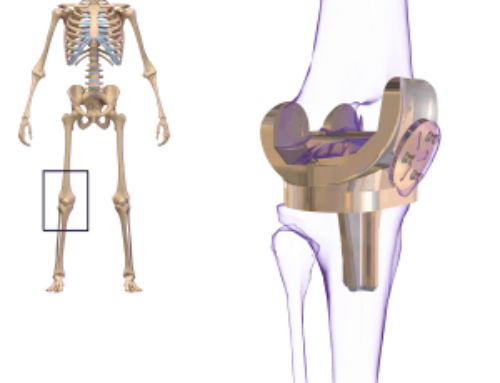Anyone can dislocate his or her kneecap, or patella, given enough torque. Young, old, muscle bound, or lean, it doesn’t matter much. The real difference maker is your anatomy. If you, or someone you know, have a chronically shifting patella, know that there is a safe and secure way to fix your knee and that Washington Orthopaedic Center has providers with years of experience doing just that.
 The knee joint primarily consists of three bones, the femur, tibia, and the patella. The fibula is more or less along for the ride here. The femur has two large condyles on either side of the knee, which is what you feel when you palpate the sides of your knees, and in between the condyles lies a groove called a trochlea. Naturally, the patella glides in the trochlea as the knee flexes and extends, fixed in the middle by the two opposing condyles. This is where things get interesting. With enough internal rotation under pressure with a knee flexed between 20 and 40 degrees, the patella can slip out of the trochlea.
The knee joint primarily consists of three bones, the femur, tibia, and the patella. The fibula is more or less along for the ride here. The femur has two large condyles on either side of the knee, which is what you feel when you palpate the sides of your knees, and in between the condyles lies a groove called a trochlea. Naturally, the patella glides in the trochlea as the knee flexes and extends, fixed in the middle by the two opposing condyles. This is where things get interesting. With enough internal rotation under pressure with a knee flexed between 20 and 40 degrees, the patella can slip out of the trochlea.
For the most part, anyone with average knee anatomy won’t ever experience his or her patella shifting outside normal position. However, people exhibiting abnormal anatomy are at a greater chance of either dislocation, a complete shift of the patella often due to a tear in the medial patella-femoral ligament (MPFL), or a subluxation, partial dislocation of the patella due to a loose or partially torn MPFL.
If you find yourself with a dislocated knee, you’ll have it reduced by an emergency response team. Afterward, it’s not a bad idea to have it checked it checked out by an orthopedist in case there was more damage to your knee during the dislocation. Normally, however, nonoperative treatment like a light brace or physical therapy is recommended after only one dislocation. It’s a different story for a chronically dislocating knee. Multiple dislocations is typically a clear sign that there is abnormal anatomy or a torn MPFL, the ligament that holds your patella to the medial side of the femur, that is causing the patella to shift unnaturally. When this occurs, an orthopedist will take a look at your x-rays to assess for abnormal alignment and anatomy, physically test your knee for instability, and then recommend surgical intervention if the signs and symptoms are positive for chronic patellofemoral instability.
MPFL Surgery and Recovery:
Washington Orthopaedic Center has several providers who are well practiced in the reconstruction of the MPFL. MPFL surgery is arthroscopic, meaning the repair is done inside the knee without opening the leg up and lasts around one hour. After surgery, you are sent home, and you are walking, with a brace to stabilize your lateral motions, that same day without any restriction on your knee’s range of motion. After roughly four weeks, the brace is off, and light weight-bearing activities can be resumed with caution. For athletes, running is continued at around 10 weeks, and full return to sport takes place around four months.
Washington Orthopaedic Center has the world-class providers and assistants you need to succeed after a reoccurring injury such as a chronically dislocating patella. Dr. Slattery, a board certified sports medicine specialist, has specific training in this procedure and deliver a quality of medical expertise that we are blessed to have in our small community. Schedule an appointment to have your knee evaluated by one of our providers today by calling us at 1-360-736-2889.
-Article by Levi Bale





